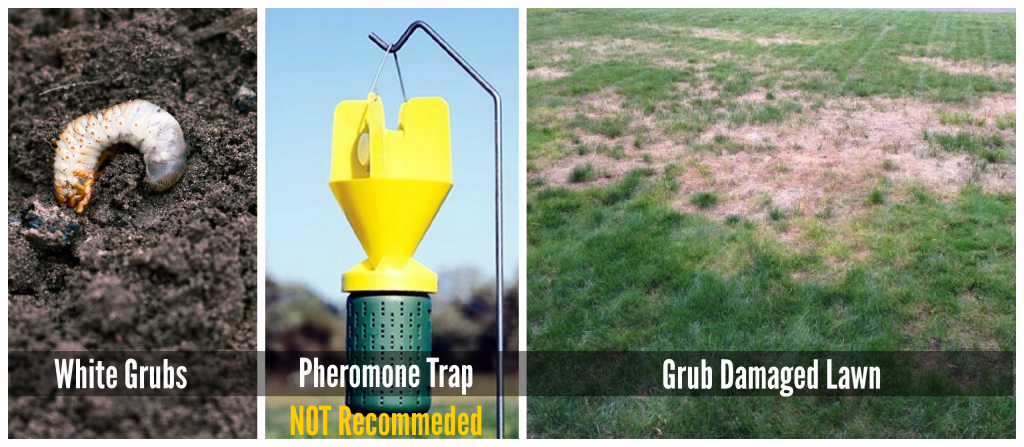Just when lawns begin to green up and flowers are in full bloom, Japanese beetles descend in droves and begin eating their way through our foliage. Because they tend to hatch in large numbers, it doesn’t take long for trees, shrubs and flowers to become completely defoliated.
The secret to controlling Japanese Beetles is to target them before they emerge. Before pupating into beetles, they begin their life cycle as grubs in your lawn, munching on the roots of your turf. They continue to feed and burrow upward before turning into beetles, laying more eggs and continuing their mission of eating everything in sight.
Once Japanese beetles are seen congregating on plants, trees & flowers, it’s often too late to implement proactive – and more effective – methods of control. Carrington Lawn & Landscape can be counted on for ideal treatment times that maximize the benefits of the application.
Why Treat for Japanese Beetles
- They’re a nuisance!
- Efforts to control them this season can mean a smaller infestation next year.
- Repeated defoliation and root damage can reduce vigor and make your landscape susceptible to other stressors like drought & disease.
- Reduces food source for foraging animals like raccoons, moles and skunks.
The Japanese Beetle’s Life Cycle
Early Spring | Grubs that have overwintered deep in the soil make their way upwards to feast on roots of turf and ornamentals.
Late Spring | Grubs begin to pupate into adult beetles & emerge from the soil.
Summer | Adult females intermittently burrow below ground to lay more eggs.
Mid-Late Summer | Eggs hatch and new grubs begin to feed.
Fall | Grubs burrow back into the soil to overwinter, ready to start the process again.
How Do You Know You Have Japanese Beetle Grubs?
- You had a Japanese beetle infestation last year!
- You’ve noticed skeletonized or lacy leaves and flowers.
- You have dry or discolored turf that mimics drought damage.
- You have foraging animals like raccoons, skunks or moles looking for grubs to eat.
- You have portions of turf that are easy to lift due to root damage.
Best Practices For Japanese Beetle Control
- If desired, hand remove beetles and place them in a bucket of soapy water.
- DO NOT use common pheromone traps! This draws MORE Japanese beetles to your yard.
- Get your neighbors on board! Japanese beetles have strength in numbers and no treatment creates a forcefield around your property. Expanding the treatment area will significantly improve control.
- Choose Carrington Lawn & Landscape As Your Professional. We’ll ensure your lawn is treated during the most effective window of time. Our product has the longest lasting residual effects out there.







